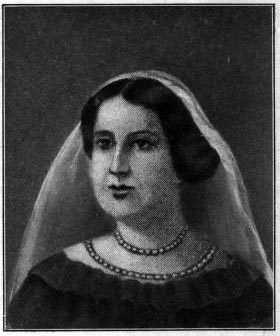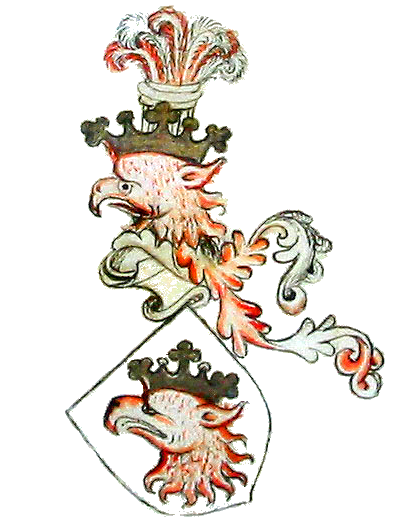|
Eberhard Zacharias Munck Af Rosenschöld
Eberhard Zacharias Munck af Rosenschöld, (3 August 1775 – 18 May 1840) was a Swedish physician and smallpox vaccine pioneer in Sweden. He was the oldest son of bishop Petrus Munck and grandson of physician . Biography Background and education Munck af Rosenschöld was born in Lund, Sweden, in 1775. He showed an extraordinary memory even as a child. He was influenced by his grandfather's career in medicine, enrolling as a student at Lund University in 1786; at the age of 15 he published a thesis, (1790), which was publicly defended under professor . In 1793 he was awarded a master of philosophy degree, and in 1794 doctor of medicine primus and medicine adjunct. In 1796 his medical practice began in earnest, and every year his reputation as a practicing physician grew. Work and ideals He also distinguished himself by enthusiastically subscribing to the ideas of the French Revolution, which he expressed in an anonymously published book, ('Biographical Anecdotes of the M ... [...More Info...] [...Related Items...] OR: [Wikipedia] [Google] [Baidu] |
Lund
Lund (, ;"Lund" (US) and ) is a city in the provinces of Sweden, province of Scania, southern Sweden. The town had 94,393 inhabitants out of a municipal total of 130,288 . It is the seat of Lund Municipality, Scania County. The Öresund Region, which includes ''Lund'', is home to more than 4.2 million people. Archeologists date the founding of Lund to around 990, when Scania was part of Denmark. From 1103 it was the seat of the Catholic Metropolitan Archdiocese of Lund, and the towering Lund Cathedral, built –1145, still stands at the centre of the town. Denmark ceded the city to Sweden in the Treaty of Roskilde in 1658. Lund University, established in 1666, is one of Scandinavia's oldest and largest institutions for education and research. [...More Info...] [...Related Items...] OR: [Wikipedia] [Google] [Baidu] |
Royal Swedish Academy Of Sciences
The Royal Swedish Academy of Sciences () is one of the Swedish Royal Academies, royal academies of Sweden. Founded on 2 June 1739, it is an independent, non-governmental scientific organization that takes special responsibility for promoting natural sciences and mathematics and strengthening their influence in society, whilst endeavouring to promote the exchange of ideas between various disciplines. The goals of the academy are: * To be a forum where researchers meet across subject boundaries, * To offer a unique environment for research, * To provide support to younger researchers, * To reward outstanding research efforts, * To communicate internationally among scientists, * To advance the case for science within society and to influence research policy priorities * To stimulate interest in mathematics and science in school, and * To disseminate and popularize scientific information in various forms. Every year, the academy awards the Nobel Prizes in Nobel Prize in Physics, phy ... [...More Info...] [...Related Items...] OR: [Wikipedia] [Google] [Baidu] |
19th-century Swedish Physicians
The 19th century began on 1 January 1801 (represented by the Roman numerals MDCCCI), and ended on 31 December 1900 (MCM). It was the 9th century of the 2nd millennium. It was characterized by vast social upheaval. Slavery was abolished in much of Europe and the Americas. The First Industrial Revolution, though it began in the late 18th century, expanded beyond its British homeland for the first time during the 19th century, particularly remaking the economies and societies of the Low Countries, France, the Rhineland, Northern Italy, and the Northeastern United States. A few decades later, the Second Industrial Revolution led to ever more massive urbanization and much higher levels of productivity, profit, and prosperity, a pattern that continued into the 20th century. The Catholic Church, in response to the growing influence and power of modernism, secularism and materialism, formed the First Vatican Council in the late 19th century to deal with such problems and confirm cer ... [...More Info...] [...Related Items...] OR: [Wikipedia] [Google] [Baidu] |
1840 Deaths
Events January–March * January 3 – One of the predecessor papers of the ''Herald Sun'' of Melbourne, Australia, ''The Port Phillip Herald'', is founded. * January 10 – Uniform Penny Post is introduced in the United Kingdom. * January 13 – The steamship ''Lexington'' burns and sinks in icy waters, four miles off the coast of Long Island; 139 die, only four survive. * January 19 – Captain Charles Wilkes' United States Exploring Expedition sights what becomes known as Wilkes Land in the southeast quadrant of Antarctica, claiming it for the United States, and providing evidence that Antarctica is a complete continent. * January 21 – Jules Dumont d'Urville discovers Adélie Land in Antarctica, claiming it for France. * January 22 – British colonists reach New Zealand, officially founding the settlement of Wellington. * February – The Rhodes blood libel is made against the Jews of Rhodes. * February 5 – Damascus Affair: The murder of a Capuchin friar and ... [...More Info...] [...Related Items...] OR: [Wikipedia] [Google] [Baidu] |
1775 Births
Events Summary The American Revolutionary War began this year, with the first military engagement on April 19 Battles of Lexington and Concord on the day after Paul Revere's ride. The Second Continental Congress took various steps toward organizing an American government, appointing George Washington commander-in-chief (June 14), Benjamin Franklin postmaster general (July 26) and creating a Continental Navy (October 13) and a Marine force (November 10) as landing troops for it, but as yet the 13 colonies have not declared independence, and both the British (June 12) and American (July 15) governments make laws. On July 6, Congress issues the Declaration of the Causes and Necessity of Taking Up Arms and on August 23, King George III of Great Britain declares the American colonies in rebellion, announcing it to Parliament on November 10. On June 17, two months into the colonial siege of Boston, at the Battle of Bunker Hill, just north of Boston, British forces are vic ... [...More Info...] [...Related Items...] OR: [Wikipedia] [Google] [Baidu] |
Brita Catharina Lidbeck
Brita Catharina Lidbeck, also Brita Catharina Munck af Rosenschöld (1788 – 2 March 1864) was a Swedish Dilettante concert singer. She was a member of the Royal Swedish Academy of Music.Gustaf Hilleström: Kungl. Musikaliska Akademien, Matrikel 1771-1971 She was the daughter of Petrus Munck af Rosenschöld, bishop of Lund, and sister of physician Eberhard Zacharias Munck af Rosenschöld. She married Anders Lidbeck, professor in Lund, in 1817. She was a student of the opera singer Karl Magnus Craelius, and made her public debut at a concert arranged by him in Stockholm in 1813. Lidbeck was a non-professional concert singer. She performed at charity concerts and in musical societies. She was inducted into the Royal Swedish Academy of Music in 1827. She performed in public for the last time in a charity concert to the benefit of the students of the Royal Academy of Music on 6 March 1842. Singers from the royal academy performed at her funeral. See also * Anna Brita Wendeli ... [...More Info...] [...Related Items...] OR: [Wikipedia] [Google] [Baidu] |
Läkartidningen
''Läkartidningen'' is a Swedish medical journal A medical journal is a peer-reviewed scientific journal that communicates medical information to physicians, other health professionals. Journals that cover many medical specialties are sometimes called general medical journals. History The first ... which was first published in 1965 by the ''Sveriges Läkarförbund'' ( Swedish Medical Association), an organisation founded in 1904. External links * (in Swedish)Publication information at the National Library of Medicine website Academic journals established in 1965 Swedish-language journals General medical journals Academic journals published by learned and professional societies Medicine in Sweden 1965 establishments in Sweden {{general-medical-journal-stub ... [...More Info...] [...Related Items...] OR: [Wikipedia] [Google] [Baidu] |
City Physician
City physician (German language, German: ; , , from Latin ) was a historical title in the Late Middle Ages for a physician appointed by the city council. The city physician was responsible for the health of the population, particularly the poor, and the Hygiene, sanitary conditions in the city. His duties also included the supervision of Pharmacy (shop), pharmacies and the supervision of those engaged in medical tasks, such as Midwife, midwives and barber surgeons. In addition, he had Forensic medicine, forensic duties such as assessing the Injury, injuries of living persons, external postmortem examinations, and conducting Autopsy, autopsies in cases of non-natural and unexplained deaths. In times of epidemic, many city physicians published small, printed books of guidelines. His functions combined aspects of the modern health minister, chief medical officer, coroner, and medical/pharmaceutical licencing authority. The role existed in what are today a number of European countries ... [...More Info...] [...Related Items...] OR: [Wikipedia] [Google] [Baidu] |
Malmö
Malmö is the List of urban areas in Sweden by population, third-largest city in Sweden, after Stockholm and Gothenburg, and the List of urban areas in the Nordic countries, sixth-largest city in Nordic countries, the Nordic region. Located on the Øresund, Öresund Øresund, strait on the southwestern coast of Sweden, it is the largest city in Scania, with a municipal population of 365,644 in 2024, and is the Governors of Skåne County, gubernatorial seat of Skåne County. Malmö received its city privileges in 1353, and today Metropolitan Malmö, Malmö's metropolitan region is home to over 700,000 people. Malmö is the site of Sweden's only Fixed link, fixed direct link to continental Europe, the Öresund Bridge, completed in 2000. The bridge connects Sweden to Denmark, and carries both road and rail traffic. The Öresund Region, which includes Malmö and Copenhagen, is home to four million people. The city was one of the earliest and most-Industrial Revolution, industri ... [...More Info...] [...Related Items...] OR: [Wikipedia] [Google] [Baidu] |
Population Studies
Population study is an interdisciplinary field of scientific study that uses various statistical methods and models to analyse, determine, address, and predict population challenges and trends from data collected through various data collection methods such as population census, registration method, sampling, and some other systems of data sources. In the various fields of healthcare, a population study is a study of a group of individuals taken from the general population who share a common characteristic, such as age, sex, or health condition. This group may be studied for different reasons, such as their response to a drug or risk of getting a disease. See also *Demography Demography () is the statistical study of human populations: their size, composition (e.g., ethnic group, age), and how they change through the interplay of fertility (births), mortality (deaths), and migration. Demographic analysis examine ... References External links Population studyen ... [...More Info...] [...Related Items...] OR: [Wikipedia] [Google] [Baidu] |
Scania
Scania ( ), also known by its native name of Skåne (), is the southernmost of the historical provinces of Sweden, provinces () of Sweden. Located in the south tip of the geographical region of Götaland, the province is roughly conterminous with Skåne County, created in 1997. Like the other historical provinces of Sweden, Scania still features in colloquial speech and in cultural references, and can therefore not be regarded as an archaic concept. Within Scania there are 33 municipalities of Sweden, municipalities that are autonomous within the Skåne Regional Council. Scania's largest urban areas of Sweden, city, Malmö, is the third-largest city in Sweden, as well as the fifth-largest in Scandinavia. To the north, Scania borders the historical provinces of Halland and Småland, to the northeast Blekinge, to the east and south the Baltic Sea, and to the west Öresund. Since 2000, a road and railway bridge, the Öresund Bridge, bridges the Öresund, Sound and connects Scania ... [...More Info...] [...Related Items...] OR: [Wikipedia] [Google] [Baidu] |







